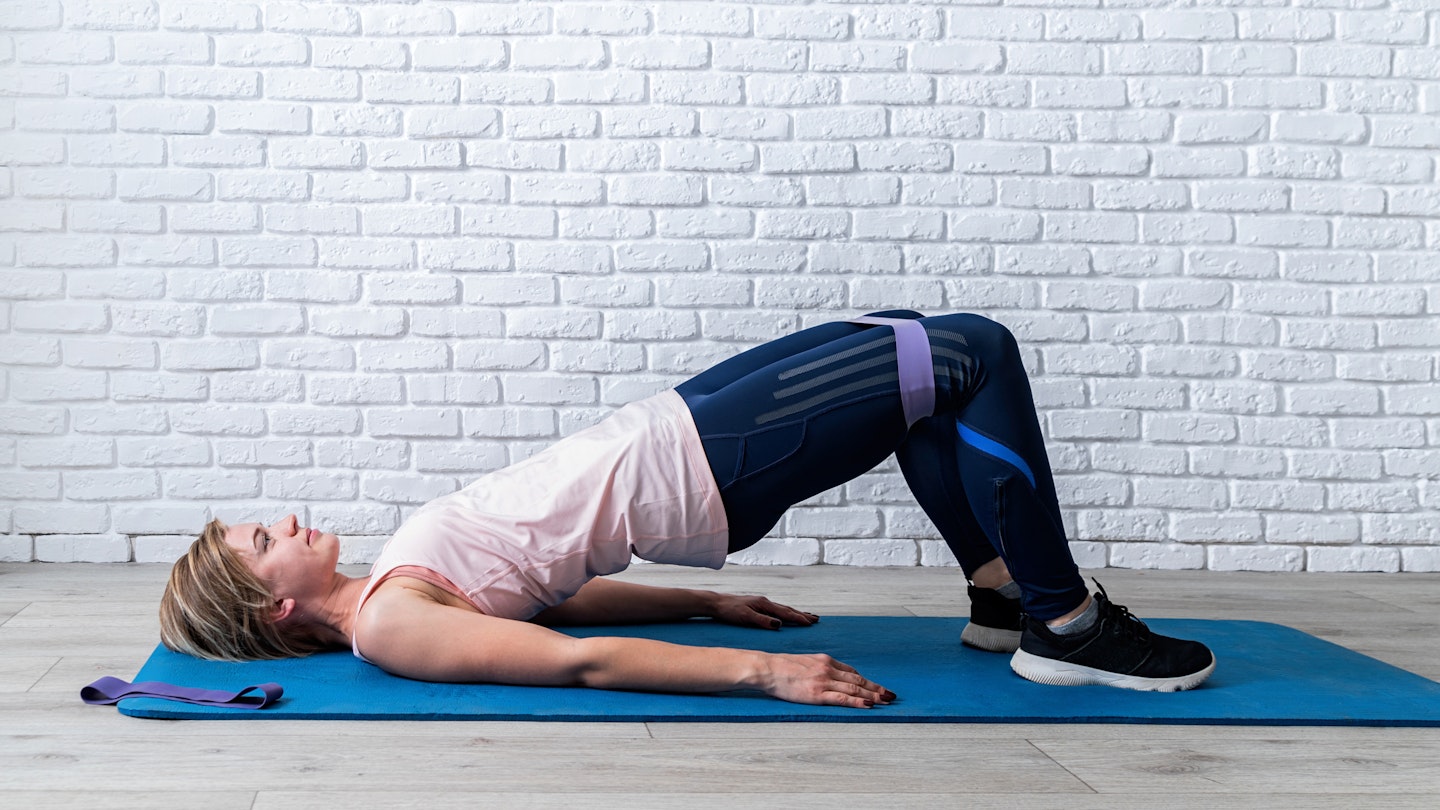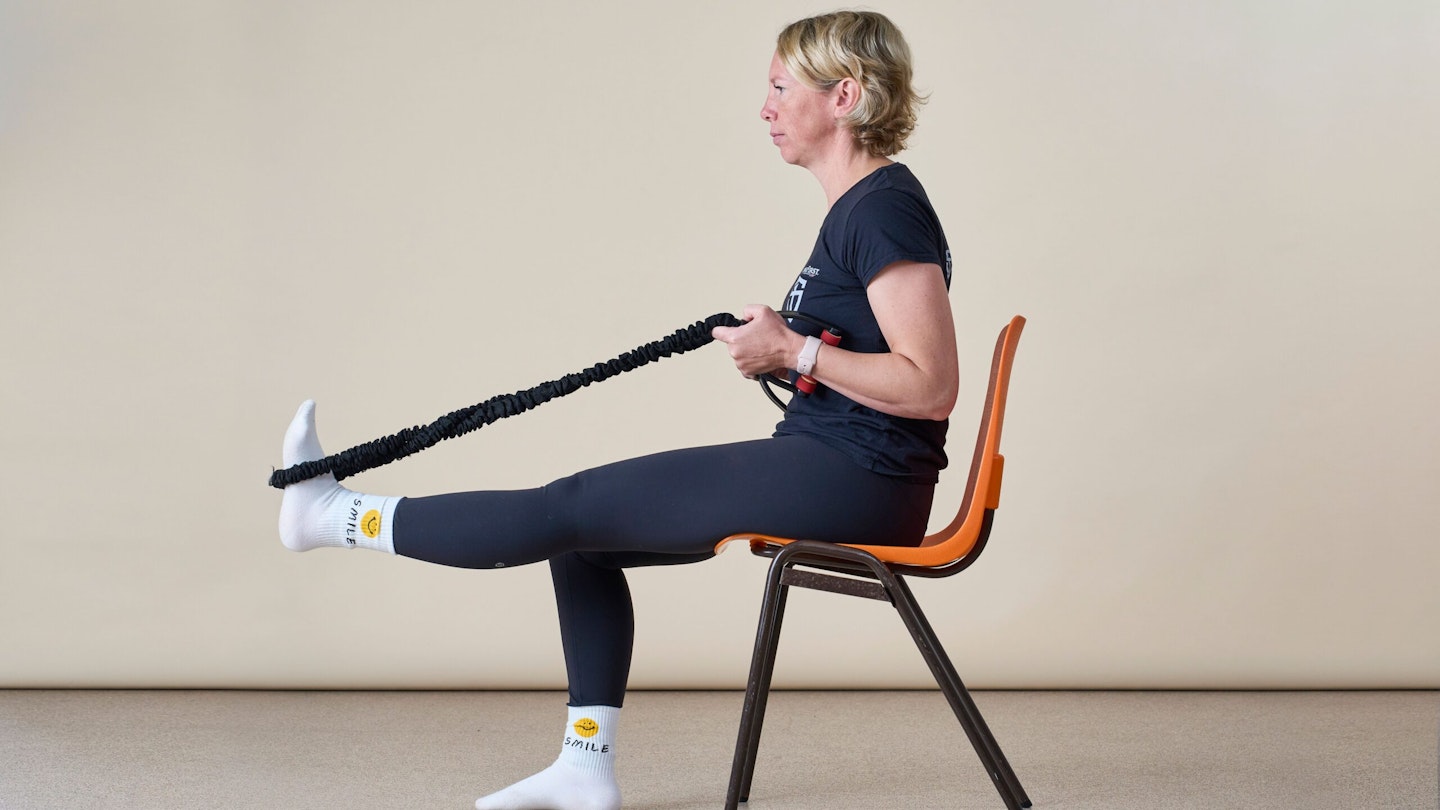There are many ways to build strength and mobility, something that’s important as we age. You might like to go to a gym or lift weights at home. You might take an exercise class or follow along with a workout video, or you might like to try using resistance bands.
These elasticated bands come in different strengths, lengths and styles, but how do you use resistance bands? Read on as our resident personal trainer Becky Fuller explains what resistance bands do and how to use them, plus how to choose the right ones and how to exercise with them.
What do resistance bands do?
Resistance bands exercise all areas of the body and can replace dumbbells for many types of exercises. They’re particularly useful for those with limited mobility as a lot of the exercises can be done while seated.
Overall, they help improve strength and flexibility, making everyday activities easier. The NHS recommends some form of strengthening activities on at least two days a week to preserve bone density and protect against conditions such as osteoporosis and osteoarthritis.
Do resistance bands work?
Yes! To strengthen the joints, we need to work against some form of resistance. That can come in the form of weights (such as adjustable dumbbells, kettlebells, or gym machines), our own bodyweight (moves like push-ups, pull-ups), or resistance bands. The muscles must work in synergy to move the opposable force, so we build strength.
Resistance bands are also effective at increasing mobility. If you loop one around your foot, for example, you can then pull the ends to lift the leg and stretch the hamstring whereas a lot of us would have difficulty holding the leg at the ankle joint to do this. You can add resistance band exercises to a mobility exercises routine.

How do I know what type of resistance band to use?
There are different types of resistance bands, and they all serve different purposes. Here’s the most common:
-
Fabric resistance loops: Used mainly to enhance leg exercises, these loops are good for working the thighs and glutes (bum muscles). They’re also helpful to support you during moves like squats. They’re often sold in packs of three, with light, medium and heavy resistance. You can also get rubber ones, but the fabric ones have better grip and don’t roll as much
-
Long resistance loops: These are the most versatile of resistance bands and can be used for many things. It’s easy to attach them to points around the home such as sturdy banisters for some upper body exercises. You can also stand on it and hold each end or stretch the chest and shoulders by pulling it out wide. They’re often used for support in moves like pull-ups. They come in various levels of resistance – usually the thicker the band the harder it’ll be.
-
Elastic resistance band: Usually one long length of stretchy elastic, these bands offer the least resistance but are great for chair exercises and improving mobility. They’re also particularly useful for rehab of joints like shoulders, hips and knees. If you need to increase the resistance, you can grasp further down the band.
-
Resistance band with handles: As above, these are one long band (usually covered in fabric) with handles on the end. They work in the same way as the elastic resistance band, but they’re often stronger. Many resistance bands with handles also come with a door attachment, offering much more versatility to your workout.
How to use resistance bands at home
If you want to work out at home using resistance bands it’s a good idea to invest in a few different styles, depending on your goals. If you will mainly be doing chair-based exercises or working on mobility, you’ll need an elastic band and a couple of long resistance loops offering different tension. Our tips below for using bands for the upper and lower body will help you choose what to buy.
We’d also recommend some supportive workout trainers, and comfortable clothing, such as leggings and a t-shirt, that you can move freely in. YouTube offers a wide variety of free workouts that you can follow along with at home.

How to use resistance bands for the lower body
Stephen Gray is the owner of The Training Gyms, who specialise in fitness after 40. He recommends using resistance bands for leg workouts. “Resistance bands are excellent to use for large exercises, like squats,” he says. “Loops can be wrapped around the thighs, meaning you are always pressing back against their inward pressure. This helps to exercise the glute muscles that support the hips and lower back. You can also use a long band; stand on it and pull the ends over the shoulders. This will give you resistance on the way up and down – just be sure to go slow on the way down.”
Exercises to try:
Squats – with a band around the thighs, follow the video below. Bend the knees and push the hips back, as if you’re sitting in a chair.
Glute bridge – lie on your back, band around your thighs, with your knees bent and feet flat. Push your hips towards the ceiling, squeezing your bum muscles as you do so.
Clam – with a band around your thighs, lie on your side with your knees bent (rest your head on your hand). Lift and lower the top leg from the knee, keeping the ankles together.
Hamstring stretch – Sitting in a chair, loop a band around your foot, then pull the ends of the band to raise your leg until you feel a stretch at the back.

How to use resistance bands for the upper body
“Resistance bands can be used for both chest press style exercises and shoulder press exercises,” Gray says. “They’re also excellent for pulling movements, which help improve posture and shoulder health. Upper body exercises typically need lighter bands than lower body movements.”
Exercises to try:
Chest press – Lie on your back with a long resistance band underneath you, slightly below your shoulders. Grasp the ends and push up, towards the ceiling. Lower slowly.
Row – Place a long band around something (a sturdy table leg, your feet) or use a door attachment to secure it. Sitting or standing, grab the ends of the band and pull it in towards you, letting your elbows slide back.
Chest and shoulder stretch – Hold a long band on either end. Pull the hands apart, stretching through the chest then lift the arms as high as you can, reaching back past the head if you’re able. Keep the tension on the band.
Stephen Gray is the owner of The Training Gyms, who specialise in fitness after 40
Becky Fuller is a senior digital writer for Yours.co.uk. She is also a fully qualified personal trainer and strength coach, specialising in fitness and wellbeing for over 50s. Prior to joining Yours, Becky was a fitness writer for Saga, and a freelance entertainment and theatre journalist. Becky is passionate about helping people to move well and discover the many benefits of strength training.
